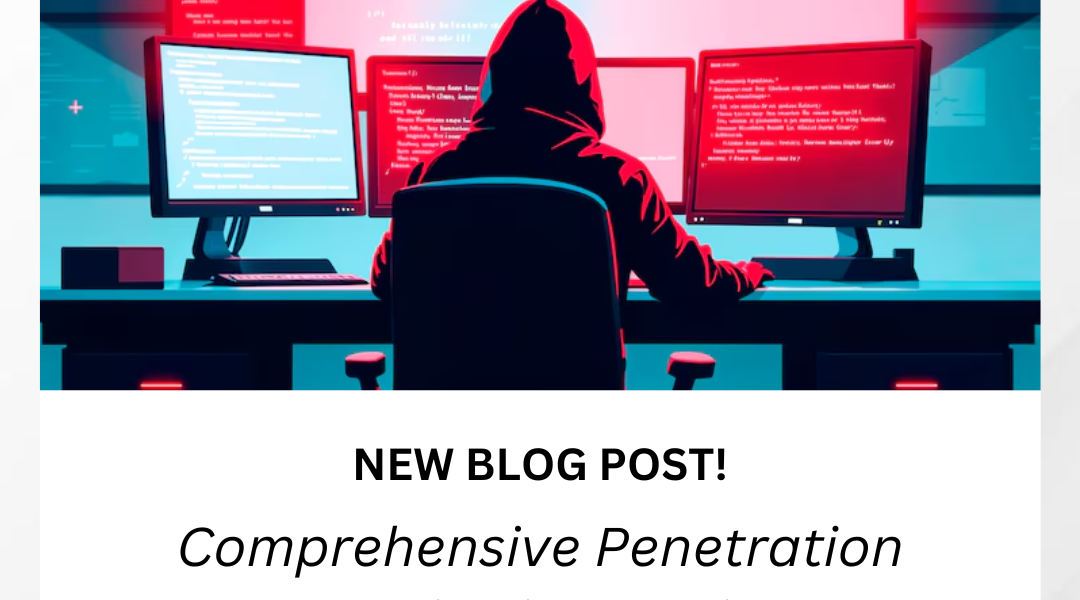Unlocking the Power of Cloud Security Governance for Business Success
In this present digital space, where information breaches and cyber attacks are becoming popular, organizations big or small, must focus on cloud security governance to shield their delicate data. Cloud security governance talks about the policies, methods, and controls that businesses execute to guarantee the secrecy, integrity, and availability of their information in the cloud. By effectively managing cloud security governance, businesses can protect their data, enhance customer trust, and drive business success.
Importance of Cloud Security Governance for Businesses
Cloud security governance has become increasingly crucial for businesses due to the following reasons:
1. Data Protection
Cloud-based storage and applications frequently contain significant and delicate information, including client data, monetary records, and intellectual property. Strong cloud security governance is important to prevent unapproved access, information breaches, and cyber attacks that could prompt financial misfortunes, reputational harm, and legal liabilities.
2. Regulatory Compliance
Businesses operating in regulated industries, such as healthcare and finance, must adhere to strict data privacy and security standards, such as GDPR and HIPAA. Cloud security governance ensures compliance with these regulations, avoiding hefty fines and legal repercussions.
3. Customer Trust and Confidence
Data breaches and security incidents can erode customer trust and confidence, leading to customer attrition and brand damage. Effective cloud security governance demonstrates a commitment to data protection, fostering customer loyalty and brand reputation.
4. Business Continuity and Resilience
Cloud security governance plays a vital role in business continuity and resilience. By preventing data breaches and ensuring the availability of critical applications, businesses can maintain operations and minimize disruptions caused by cyber attacks.
Common Challenges in Implementing Cloud Security Governance
Implementing cloud security governance can pose challenges for businesses, including:
1. Shared Responsibility Model
Cloud providers and their customers share responsibility for security. Businesses must clearly define their security responsibilities and ensure that cloud provider security measures align with their own governance framework.
2. Managing Complexity
Cloud environments are often complex and involve multiple vendors, applications, and data sources. Businesses must effectively manage these complexities to maintain consistent security across their cloud infrastructure.
3. Continuous Monitoring and Improvement
Cloud security threats are continually growing, requiring ceaseless monitoring, assessment, and adaptation of security controls. Organizations should apply a proactive way to deal with arising threats.
Key Components of Cloud Security Governance
Effective cloud security governance encompasses a comprehensive set of components:
1. Policies and Procedures
Clearly defined policies and procedures outline the organization’s security expectations, including access controls, data handling practices, and incident response protocols.
2. Risk Management
Businesses should identify, assess, and prioritize cloud security risks. This involves evaluating potential threats, vulnerabilities, and the impact of security incidents on business operations.
3. Access Controls
Granular access controls restrict access to sensitive data and applications to authorized personnel only. This includes user authentication, role-based access control, and data encryption.
4. Vulnerability Management
Regular vulnerability scanning and patching identify and remediate software weaknesses that could be exploited by attackers.
5. Incident Response
A well-defined incident response plan outlines procedures for detecting, containing, and recovering from security breaches.

Best Practices for Cloud Security Governance
Establishing a robust cloud security governance framework involves adopting best practices such as:
1. Executive Sponsorship
Secure senior management buy-in and support for cloud security initiatives.
2. Continuous Education and Awareness
Educate employees about cloud security risks and best practices to minimize human error.
3. Automation and Integration
Utilize automation tools to streamline security tasks and integrate security controls with existing IT systems.
4. Continuous Monitoring and Auditing
Continuously monitor cloud environments for suspicious activity and conduct regular security audits to identify and address vulnerabilities.
5. Third Party Assessments
Connect with autonomous security specialists to conduct penetration tests and vulnerability assessment to validate the adequacy of security controls.
Cloud Security Governance Frameworks and Standards
Numerous cloud security frameworks and standards provide guidance for implementing effective cloud security governance. These include:
1. NIST Cybersecurity Framework (CSF)
A comprehensive framework for managing cybersecurity risks in the cloud.
2. Cloud Security Alliance (CSA) Cloud Control Matrix (CCM)
A detailed set of controls for managing cloud security risks.
3. ISO 27001
An international standard for information security management that can be applied to cloud environments.
Tools and Technologies for Cloud Security Governance
A variety of tools and technologies can support cloud security governance efforts:
1. Cloud Access Security Brokers (CASBs)
Provide centralized access control and visibility across cloud environments.
2. Cloud Security Posture Management (CSPM) tools
Continuously monitor cloud configurations for compliance with security policies and identify potential vulnerabilities.
3. Data Loss Prevention (DLP) solutions
Prevent sensitive data from being leaked or exfiltrated from cloud environments.
Unlocking the Power of Cloud Security Governance for Business Success.
Benefits of Cloud Security Governance for Business Success
Implementing cloud security governance offers several benefits for businesses, including:
1. Enhanced Security
Cloud security governance protects sensitive information from unauthorized access, information breaches, and cyber attacks, mitigating financial misfortunes, reputational harm, and legal liabilities.
2. Enhanced Compliance
Businesses can demonstrate compliance with industry regulations and standards, such as GDPR and HIPAA, avoiding hefty fines and legal repercussions.
3. Enhanced Customer Trust
Robust cloud security governance builds customer trust and confidence, fostering brand loyalty and reputation.
4. Reduced Costs
Cloud security governance can help businesses reduce security costs by minimizing the risk of data breaches and the associated expenses.
5. Improved Business Continuity
Efficient cloud security governance ensures business continuity by preventing data breaches and ensuring the availability of critical applications.
Case Studies: Successful Implementation of Cloud Security Governance
1. Healthcare Industry
The healthcare giant implemented a robust cloud security governance framework to protect patient data and comply with HIPAA regulations. This approach has helped the company maintain its reputation for data security and trust.
2. Financial Industry
The financial services institution adopted a comprehensive cloud security governance strategy to safeguard its vast trove of customer data. This strategy has enabled JPMorgan Chase to maintain its position as a trusted financial partner.
3. Netskope Case Study: Enhancing Cloud Security Governance at a Manufacturing Company
A Manufacturing company needed to modernize its cloud security infrastructure to address the growing complexity of its cloud environment and the increasing sophistication of cyber threats. The company was facing challenges such as:
- Restricted visibility into cloud traffic: The organization lacked a thorough understanding of its cloud traffic, which made it hard to recognize and mitigate security risks.
- Ineffective access controls: The organization’s access controls were not adequately granular, which made it challenging to prevent unauthorized access to delicate information.
- Absence of data loss prevention (DLP): The organization didn’t have a DLP solution set up, which made it powerless against information exfiltration.
- Non-compliance with industry guidelines: The organization was not in compliance with a few industry guidelines, like GDPR and PCI DSS.
To address these challenges, the company implemented Netskope’s cloud security platform. Netskope’s platform provided the company with the visibility, control, and compliance it needed to secure its cloud environment.
Unlocking the Power of Cloud Security Governance for Business Success.
Embracing Cloud Security Governance for Future Growth
In today’s interconnected and data-driven world, cloud security governance has become an essential component of business success. By prioritizing cloud security governance, businesses can protect their sensitive data, enhance customer trust, comply with regulations, and drive business growth. As cloud adoption continues to rise, the need for effective cloud security governance will only become more critical. Businesses that embrace this approach will be well-positioned to navigate the evolving cyber threat landscape and achieve sustainable success in the cloud.
We at Treten Networks have all it takes to provide Cloud Security Governance to any business.

